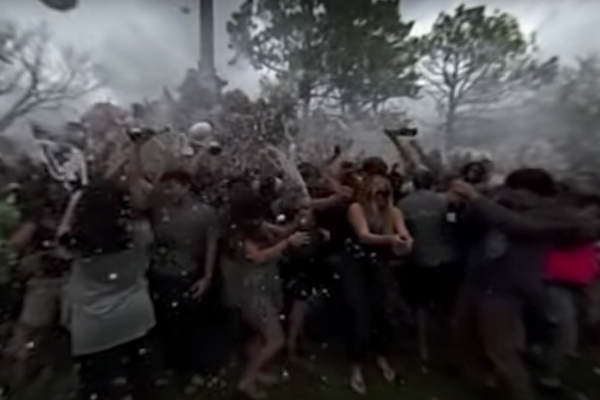Arielle Mari, Mark Lee, and Karen To from Colorado College presented a post-lunch session on 360-degree video. (You can find all their examples at 2cc.co/heweb16 — and looks great on mobile!)
360-degree video allows potential students a literal window
The team’s first foray into 360 video used the Ricoh Theta; it’s a low-end device, less than $400, that allows for plug-and-play 360-degree video capability. There’s still some work that’s required; metadata needs to be injected by the Theta app. They learned quickly that the novelty of 360 video only went so far; the tech wasn’t enough on its own.
They decided to highlight people and places; they put a camera on the field during soccer practice, and in the middle of the line where the graduates were filing into the commencement ceremony. In addition, they allowed a real “inside look” into things like the construction of their new library. One of the joys of 360-degree video is that it’s accessible; you don’t need to have super high-end gear in order to able to view it. You can do it on your phone or laptop too. (That said, it’s super amazing on an Oculus or a Vive.)
Not every social network or platform utilizes 360-degree video properly, however. Facebook handles the metadata easily and plays 360 videos easily, but as robust as an Instagram presence as you may have, it doesn’t parse 360 videos yet. Even YouTube has limitations on 360-degree videos; sometimes on mobile devices, the video flattens out as its ‘equirectangular’ mode and doesn’t always handle the interactivity well.
Mark Lee also addressed some of the back-end developing issues involving 360-degree video, highlighting:
1. aframe.io
2. github.com/GoogleVR/VRView
3. three.js
Karen To talked about the future of 360 degree video: more mainstream channels, better quality video, and hopefully spatial video.

